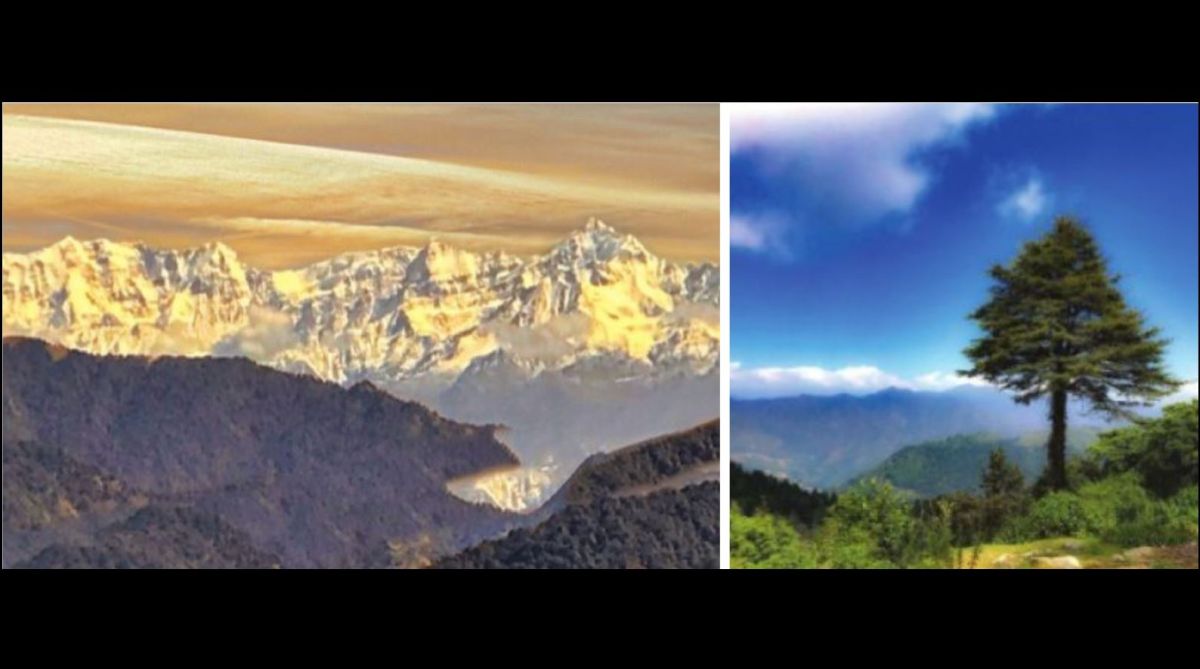Uttarakhand: Fire breaks out at hotel in Mussoorie, no casualties reported
A massive fire broke out in a hotel located on Mussoorie Camel Back road on Sunday morning, officials said. According…
The twin town of Mussoorie has preserved its quintessential European flavour. Sarmistha Ganguli makes an escape on to the cobbled paths of metaphysics.

(Photo: SNS)
As one walks the path travelled by eminent personalities like Capt Fedrick Young, “Pahari” Wilson, Sir George Everest and Australian author John Lang in Landour, Mussoorie, along the serpentine necklace around Lal Tibba taken by these men, it makes one philosophical.
The quaint cantonment habitation of Landour still preserves its quintessential European flavour, time-warped in another orbital zone as distinct from the local orbit of Mussoorie and unheard, untouched and unmentioned resonances in the annals of historical pages.
It has vehemently preserved and guarded not only the structures of the past, but the surrounding natural beauty of the Himalayas. The snow peaks, summitting out from the immediate hills in the foreground evoke a sense of otherworldliness and you fall in love with everything that this cantonment station stands for.
Advertisement
You want to come back and revisit it again and then again, until you and Swargrohini staring at you white capped become one. You don’t need any company and the solitude of the “Chakkar” is more than enough to fill one’s soul. The mutinous bees, butterflies, moths, cicadas, the grasshoppers, the langoors, monkeys, the babblers, cuckoos and woodpeckers scorn you for your intrusion in their private lives, and you walk on smiling, asking for forgiveness.
In mid-October, the Mussoorie Winterline beckons your gaze in the evening, the sun rays kissing the peaks on the other side lightens your heart at dawn. We are the trespassers here and rightly do the signs say that noise from humans is not welcome. There is a plastic bag hanging on a tree asking the tourists and travellers to deposit their poems in it. Where do they go from the plastic bag? I wish I knew.
I sit on the curve of the long winding road, the favourite spot for tourists, and ponder at the microcosm of the struggle between human superiority and natural world that is unfolded here, but somehow I feel that the humans again are winning.
With a pounding heart and restless mind, I stand facing it: The Landour Cemetery. I look at the cemetery gates, and walk in. Many hundred years, many hundred souls, vacant abyss of life that refuses to bow in front of the physical, in myriad ways it emerges around the graves. The tiny mushroom, the wildflower, purple honey- cup, it is there.
Many pass it by, tourists with little interest, or interest in life rather than death, cars zoom by regardless of the peace needed by the dead to rest, children play nearby unmindful of the skeletons that keep guard on them, cows graze over them, perhaps the green grass cover is peppered by the joys and sorrows of those that lay beneath.
I walk through the broken terraces on the slopes of the Himalayas, trying to read, trying to touch the metaphor of life that had slipped by. I pause to think about my own life and beneath the moss-covered slopes they lie with soil, the weed and the roots.
I close the “Chakkar” with a cup of hot masala tea at Char Dukkan. I see the magnificent orange streak of the Winterline tenderly touching the blue sky above and pause to reflect on the duality of life. My solitude and the intimacy of high-spirited youth opposite me join hands and stare at the sun-kissed clouds on the hills.
The writer teaches English at St Thomas Girls Senior Secondary School.
Advertisement